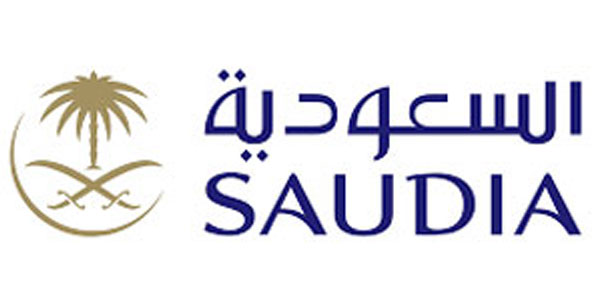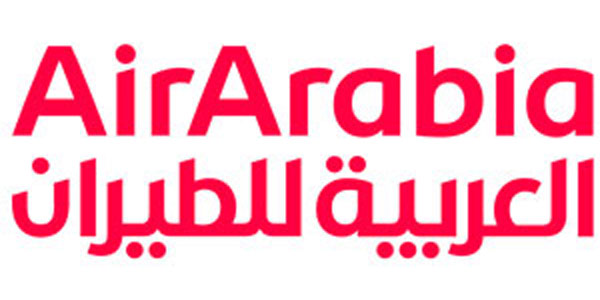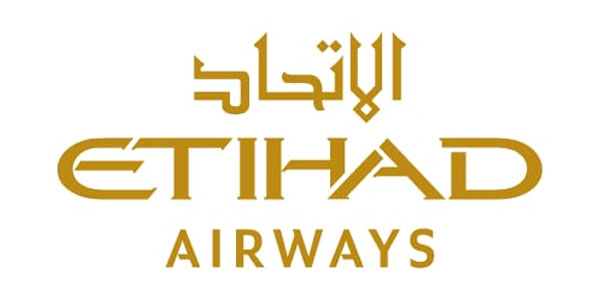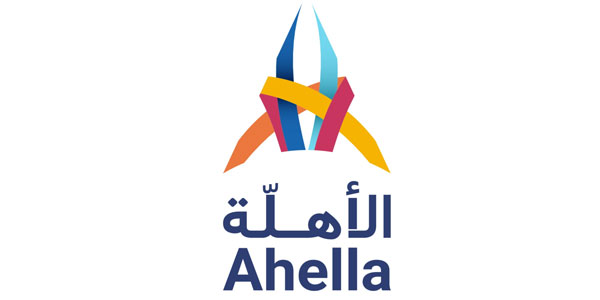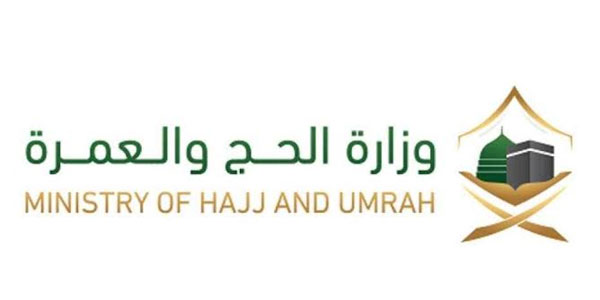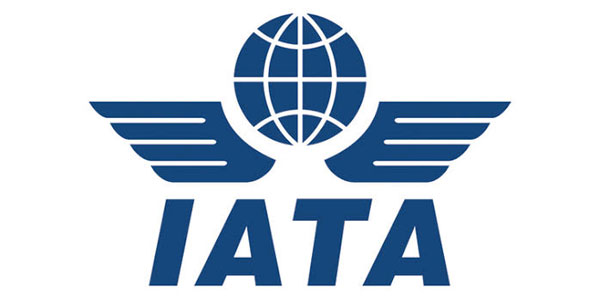Madina
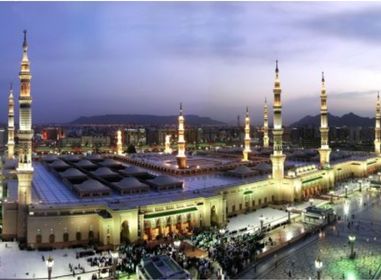
Masjid Nabawi
Masjid al-Nabawi (Arabic: المسجد النبوي; “The Prophet’s Mosque”) was built by the Prophet ﷺ shortly after his migration from Makkah to Madinah in 1 AH (622 CE).
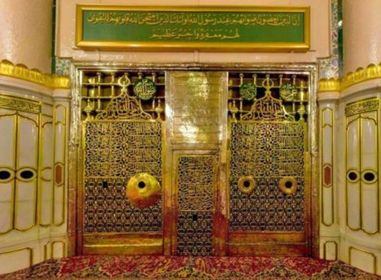
Grave and Tomb of the Prophet Muhammad ﷺ (The Sacred Chamber)
The Prophet ﷺ is buried in the Sacred Chamber, along with two of his most faithful...
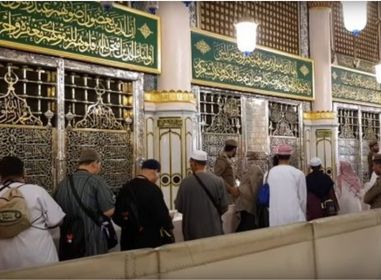
Visiting the Prophet
The most excellent of deeds on completion of the Hajj or Umrah is to go to Madinah in Order to visit the grave of the master of Prophets, the mercy into manking...
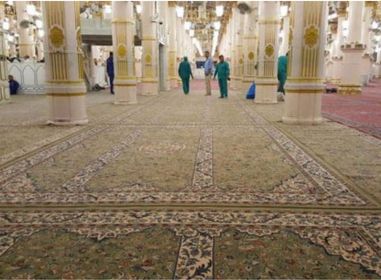
Rawdah
The Rawdah (Arabic: الروضة; “The Garden”; also transliterated as “Rawda” or “Rauda”), sometimes called al-Rawdah al-Shareef (Arabic: الروضة الشريفة; “The Exalted Garden”) ...
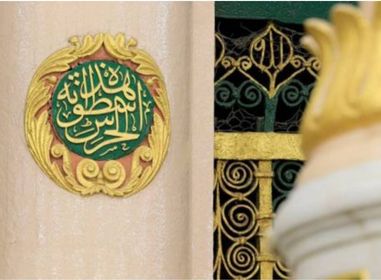
Masjid Nabawi Pillars
There are six pillars or columns inside the Rawdah area within Masjid Nabawi that hold special historical and spiritual significance, with a further two inside the Sacred Chamber...
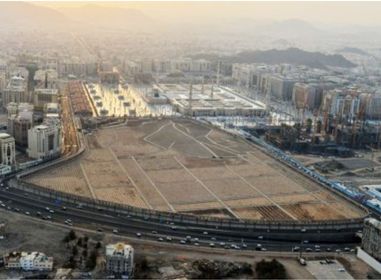
Jannatul Baqi
Jannatul Baqi (Arabic: جنة البقيع; “Garden of Baqi”), also known as Baqi al-Gharqad (Arabic: بقیع الغرقد; “Baqi of the Boxthorn”) is the main cemetery in Madinah, located to the...
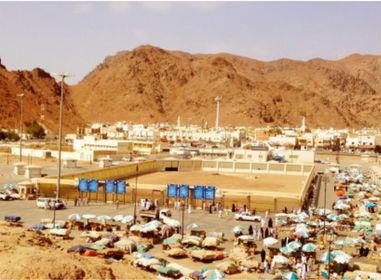
Martyrs of Uhud Cemetery
The Martyrs of Uhud Cemetery (Arabic: مقبرة شهداء أحد) contains the bodies of 70 Shuhada (martyrs) who were killed during the Battle of Uhud...

Jannatul Baqi
Jannatul Baqi (Arabic: جنة البقيع; “Garden of Baqi”), also known as Baqi al-Gharqad (Arabic: بقیع الغرقد; “Baqi of the Boxthorn”) is the main cemetery in Madinah, located to the...
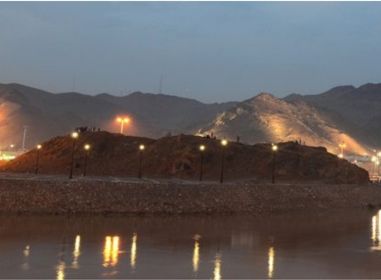
Jabal al-Rumah
Jabal al-Rumah (Arabic: جبل الرماة), also known as Jabal Ainain (Arabic: جبل عينين), is a small mountain located near Jabal Uhud where Muslim archers were positioned during the Battle of Uhud....
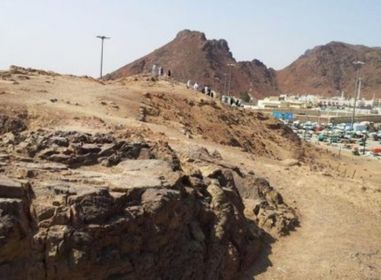
Masjid Ainain
Masjid Ainain (Arabic: مسجد عينين) is a small mosque located on the southeastern corner of Jabal al-Rumah. Only its brick walls remain today....
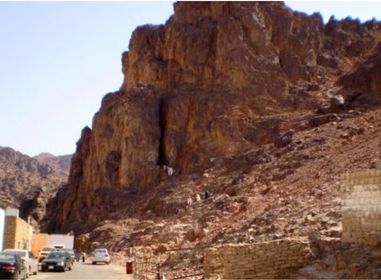
Cave of Mount Uhud
The Cave of Mount Uhud (Arabic: غار جبل احد) is the location where the Prophet ﷺ and some of his companions retreated to during the Battle of Uhud....
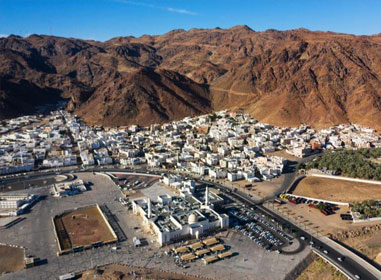
Jabal Uhud
Jabal Uhud (Arabic: جبل أحد) is the largest mountain in Madinah, measuring 1,077 metres. It was the site of the Battle of Uhud, the second military encounter between the Muslims and Meccan forces....
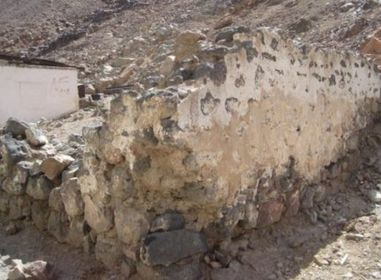
Masjid Al-Fash
Masjid al-Fash (Arabic: مسجد الفسح) is a mosque at the base of Mount Uhud where the Prophet ﷺ is reported to have prayed on the day of the Battle of Uhud....
The Seven Mosques (al-Masajid al-Sab’a)
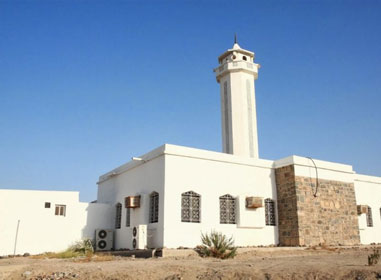
Masjid al-Fath
Masjid al-Fath (Arabic: مسجد الفتح) is the largest of the group of mosques known as al-Masajid al-Sab’a (Arabic: المساجد السبعة) or The Seven Mosques.
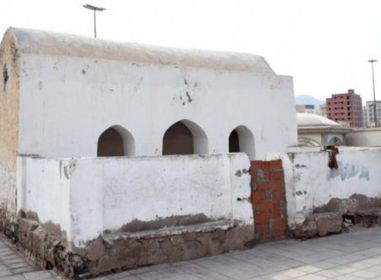
Masjid Salman al-Farisi
Masjid Salman al-Farisi (Arabic: مسجد سلمان الفارسي) is part of a group of mosques known as al-Masajid al-Sab’a (Arabic: المساجد السبعة) or The Seven Mosques.
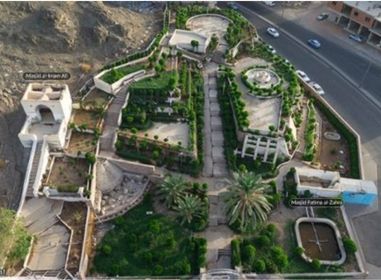
Masjid Fatima al-Zahra
Masjid Fatima al-Zahra also known as Masjid Sa’d ibn Mu’adh is the smallest of the group of mosques known as al-Masajid al-Sab’a or The Seven Mosques.
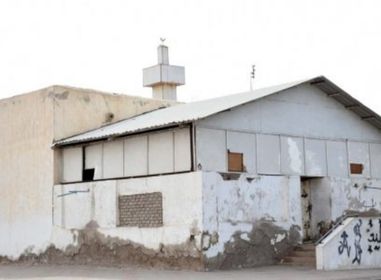
Masjid Umar ibn al-Khattab (al-Masajid al-Sab’a)
Masjid Umar ibn al-Khattab is part of a group of mosques known as al-Masajid al-Sab’a or The Seven Mosques. There is another mosque in Madinah which shares the same name.

Masjid al-Imam Ali ibn Talib (al-Masajid al-Sab’a)
Masjid al-Imam Ali ibn Talib is part of a group of mosques known as al-Masajid al-Sab’a or The Seven Mosques. There is also another mosque in Madinah with the same name.
Mosques

Masjid Quba
Masjid Quba was the first mosque to be built by the Prophet after his arrival in Madinah from Makkah. It has been renovated and expanded a number of times since it was first built.
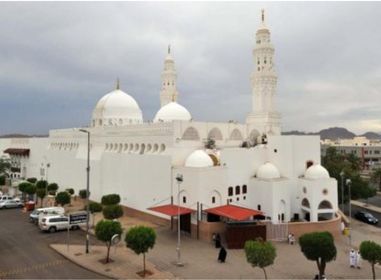
Masjid al-Qiblatain
Masjid al-Qiblatain, or Mosque of the Two Qiblas, is notable for being the location where the Prophet received a divine command to switch the Qibla from Jerusalem to Makkah. It is one of the three earliest mosques in Islamic history.
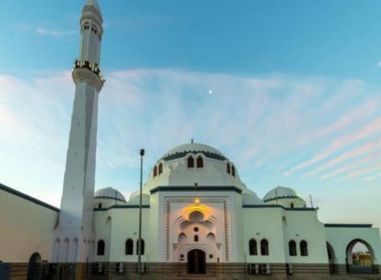
Masjid al-Jummah
Masjid al-Jummah is a mosque located on the site where the Prophet ﷺ led the first Friday prayer after his arrival in Madinah.
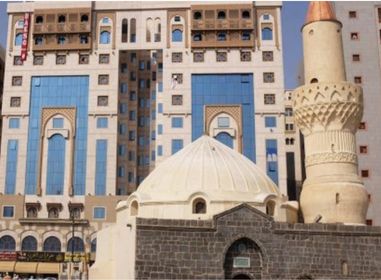
Masjid Abu Bakr al-Siddiq
Masjid Abu Bakr al-Siddiq is a mosque situated on a site where the Prophet ﷺ is reported to have performed Eid Salah.
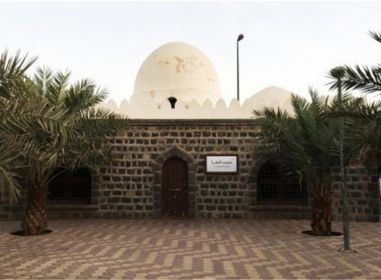
Masjid al-Suqya
Masjid al-Suqya is a mosque where the Prophet prayed and supplicated for the well-being of the Muslims of Madinah, before departing for the Battle of Badr.
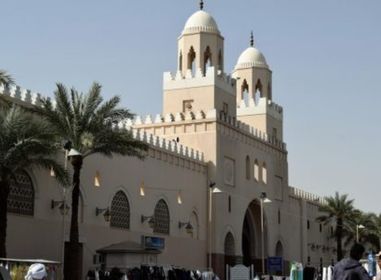
Masjid Dhul Hulayfah
Masjid Dhul Hulayfah also known as Masjid al-Shajarah is a mosque which serves as the Miqat for pilgrims travelling from Madinah to Makkah, with the intention of performing Hajj or Umrah.
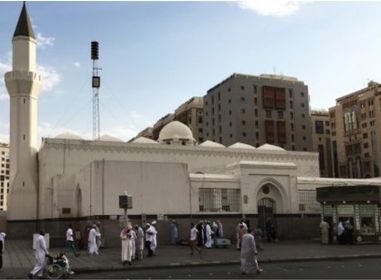
Masjid al-Imam Ali ibn Talib
Masjid al-Imam Ali ibn Talib is a mosque located at the site at which the Prophet is reported to have performed Eid Salah. There is another mosque in Madinah which shares the same name.
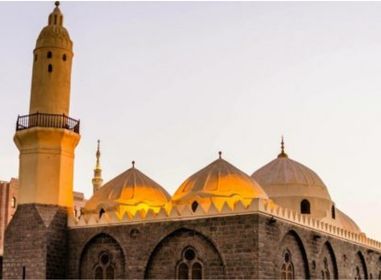
Masjid al-Ghamama
Masjid al-Ghamama is a mosque situated on the site where the Prophet performed the Eid prayer in Madinah.
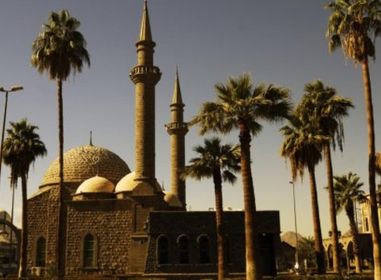
Masjid al-Anbariya
Masjid al-Anbariya is a mosque located southwest of Masjid al-Nabawi, built by the Sultan of the Ottoman Empire, Abdul Hamid II in 1908 (1326 AH).

Masjid al-Ijabah
Masjid al-Ijabah is one of the oldest mosques in Makkah, having been built around 3 AH (624 CE). The Prophet is reported to have prayed in this location.
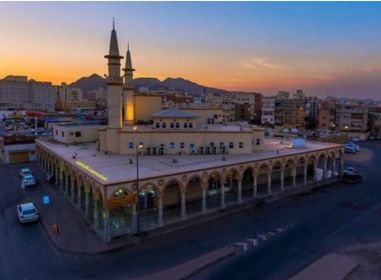
Masjid al-Manaratain
Masjid al-Manaratain is a mosque built at the location where the Prophet had prayed. It was rebuilt and expanded during the reign of King Fahd bin Abdulaziz in 2003 (1424 AH).
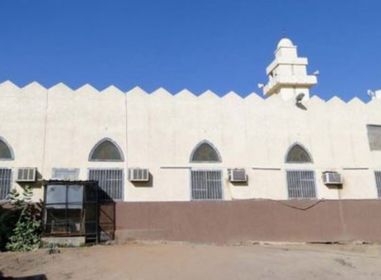
Masjid al-Mughaisla
Masjid al-Mughaisla also known as Masjid Bani Dinar is a mosque where the Prophet would often pray.
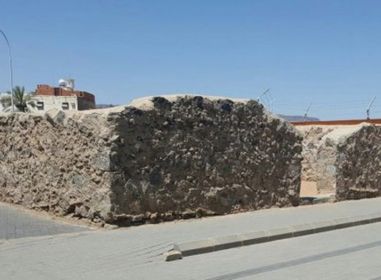
Masjid al-Misbah
Masjid al-Misbah also known as Masjid Bani Aneef is a mosque located southwest of Masjid Quba.
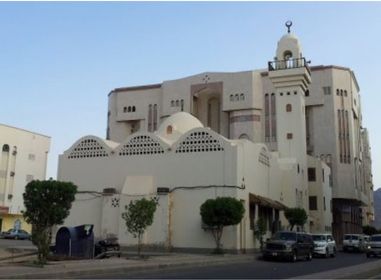
Masjid al-Mustarah
Masjid al-Mustarah also known as Masjid Bani Haritha is a mosque situated on the site where the Prophet rested and prayed upon his return from the Battle of Uhud.
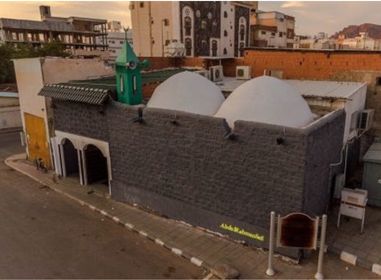
Masjid al-Shaikhain
Masjid al-Shaikhain also known as Masjid al-Dar’a is a mosque which marks the location where the Prophet prayed before the Battle of Uhud.
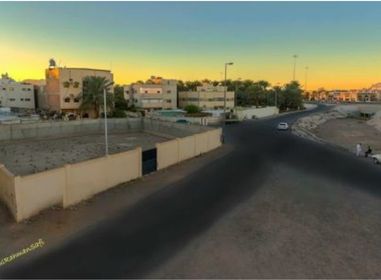
Masjid al-Fadhikh
Masjid al-Fadhikh also known as Masjid al-Shams was a mosque where the Prophet and his companions prayed during the siege of Banu Nadir.
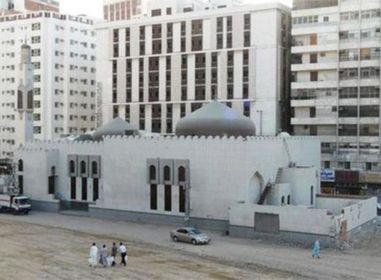
Masjid al-Rayah
Masjid al-Rayah, also known as Masjid al-Jowdariyyah, was a mosque which marked the site on which the Prophet erected a flag to commemorate the successful conquest of Makkah. The mosque was demolished in 2009 (1431 AH).
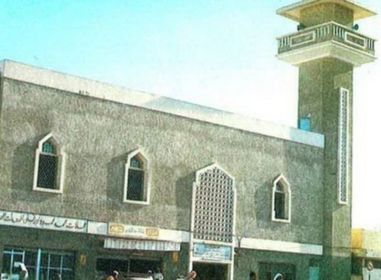
Masjid al-Sabaq
Masjid al-Sabaq was a mosque which was built in an area where horses were trained in preparation for Jihad during the time of the Prophet. The mosque has since been demolished.
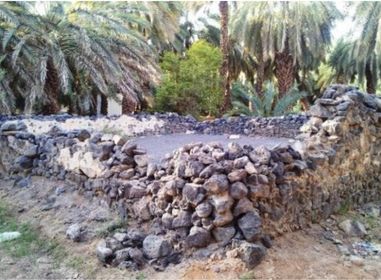
Masjid al-Tawba
Masjid al-Tawba also known as Masjid al-Asba is a mosque situated within a botanical garden where the Prophet prayed.
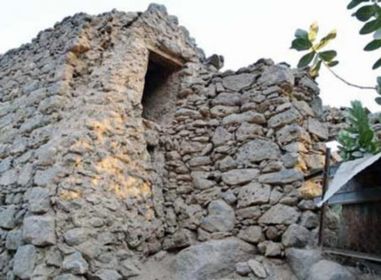
Masjid Bani Abdul Ashhal
Masjid Bani Abdul Ashhal also known as Masjid Waqim was a mosque in which the Prophet once offered Maghrib Salah.
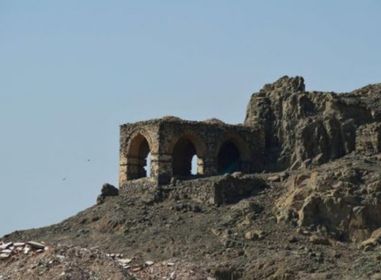
Masjid Bani Ghifar
Masjid Bani Ghifar is a mosque situated on the south east side of Jabal Sela, in which the Holy Prophet had prayed.
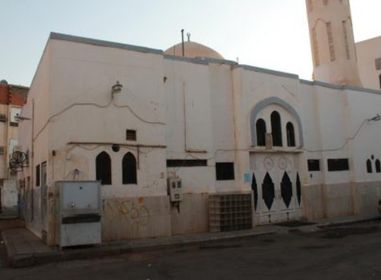
Masjid Bani Haram
Masjid Bani Haram is a mosque situated west of Jabal Sela and stands in an area where the Holy Prophet performed a miracle during preparations for the Battle of Khandaq.
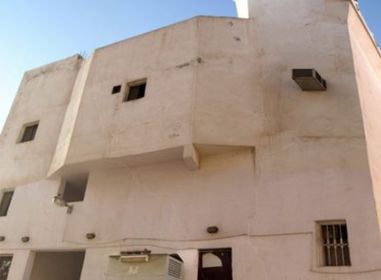
Masjid Juhaina
Masjid Juhaina is a mosque that was established by the Prophet for the tribes of Juhaina and Bali.
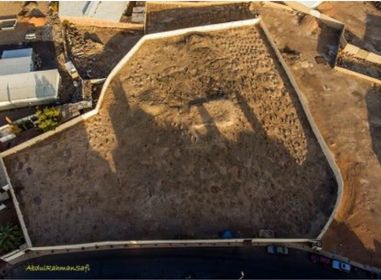
Masjid Mashrabat Umm Ibrahim
Masjid Mashrabat Umm Ibrahim was a mosque situated on the site where the son of the Prophet and his wife Maria al-Qibtiyya Ibrahim was born.
Wells
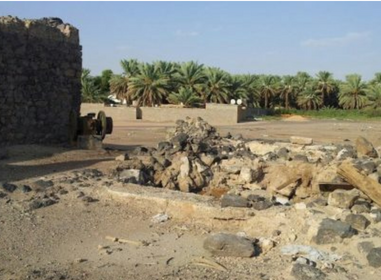
Bir al-Ihn – The Ihn Well
Bir al-Ihn also known as Bir al-Yasra was a well that the Prophet would drink from.
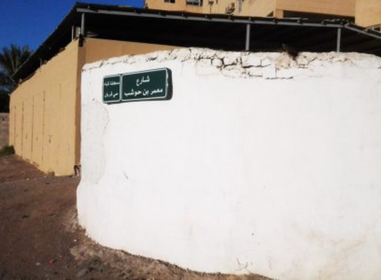
Bir Ghars – The Ghars Well
Bir Ghars was one of the wells that was favoured by the Prophet due to the freshness of its water. The Prophet drank from the well, made Wudhu with its water and requested that he be washed using its water after his death.

Bir Uthman – The Well of Uthman
Bir Uthman also known as Bir Rumah was a well that was purchased by Uthman ibn Affan for the benefit of the Muslim community of Madinah, after the Prophet’s arrival in the city.
Mountains
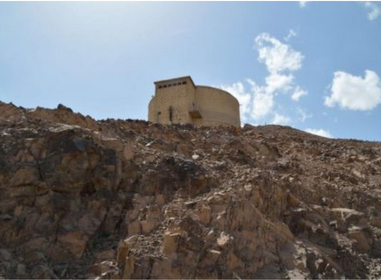
Jabal An’am
Jabal An’am is a mountain located to the right of Wadi al-Aqeeq. The castle on top of the mountain was built by the Ottoman Sultan, Abdulmejid I during the siege of Madinah
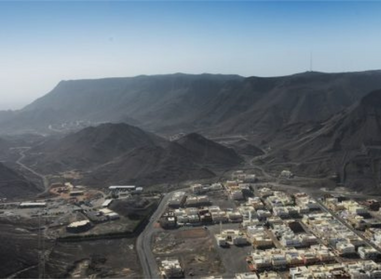
Jabal Ayr
Jabal Ayr is a mountain located in the south of Madinah, about eight kilometres away from Masjid al-Nabawi. It measures approximately 955 metres in height, making it the second largest mountain in Madinah.
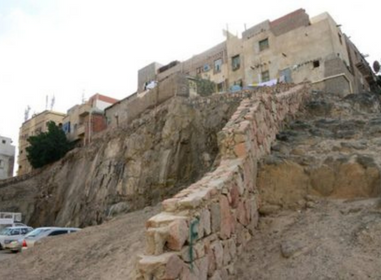
Jabal Dhubab
Jabal Dhubab also known as Jabal al-Rayah is a small mountain located in the north of Madinah, which measures no more than 20 metres in height.
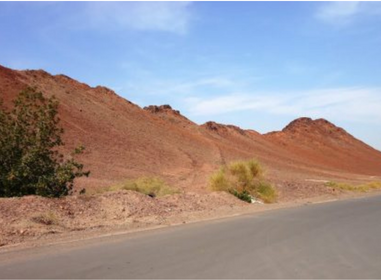
Jabal Mukaimin
Jabal Mukaimin is a small reddish mountain located to the southwest of Madinah.
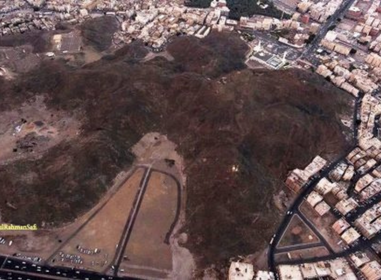
Jabal Sela
Jabal Sela is a mountain located about 500 metres west of Masjid al-Nabawi. It is about one kilometre in length and 80 metres in height.
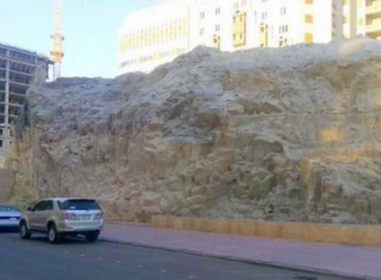
Jabal Sulaya
Jabal Sulaya is a small mountain located about 500 metres from Masjid al-Nabawi.
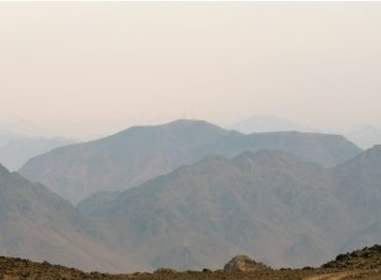
Jibal al-Jamawat
Jibal al-Jamawat is a group of three small mountains clustered to the west of Madinah, extending over part of Wadi al-Aqeeq.
Other Landmarks
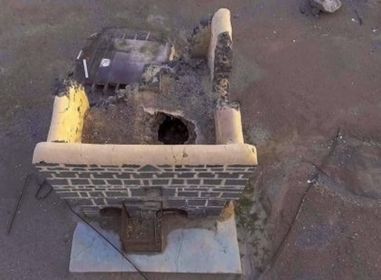
House of Syeda Fatima bint al-Husayn
The House of Syeda Fatima bint al-Husay
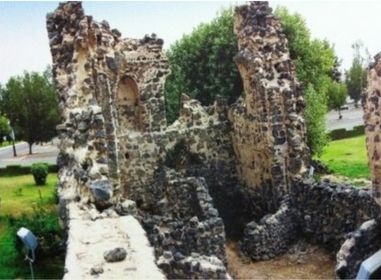
Palace of Sa’id ibn al-‘As
The Palace of Sa’id ibn al-‘As was built by Sa’id ibn al-‘As when he was governor of Madinah from 669-674 (49-54 AH).
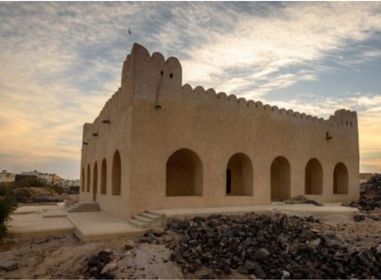
Palace of Urwah ibn al-Zubayr
The Palace of Urwah ibn al-Zubayr is located on the banks of Wadi al-Aqeeq in the west of Madinah. It was built towards the end of the first century AH.
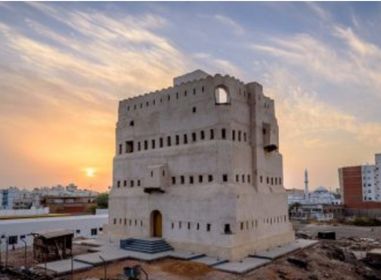
Quba Castle
Quba Castle is an old Ottoman garrison that was built by military leader Fakhri Pasha to provide fortification against invading Hashemite forces.
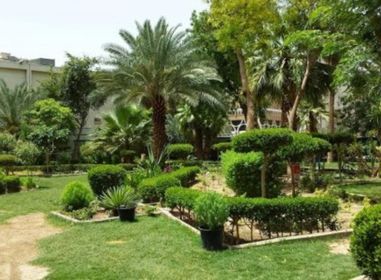
Saqifah Bani Sa’idah
Saqifah Bani Sa’idah was a roofed structure in which Abu Bakr was elected the first Caliph of the Muslims after the demise of the Prophet

Wadi al-Aqeeq
Wadi al-Aqeeq is one of the most well-known valleys in Madinah and was described by the Prophet as blessed.
Our Partners
Service related
- Umrah Tour Operators in Anekal |
- Umrah Tour Operators in Attibele |
- Umrah Tour Operators in Adugodi |
- Umrah Tour Operators in Bellandur |
- Umrah Tour Operators in Yelahanka |
- Umrah Tour Operators in Banaswadi |
- Umrah Tour Operators in Bommasandra |
- Umrah Tour Operators in Bannerghatta |
- Umrah Tour Operators in Banashankari |
- Umrah Tour Operators in Carmelaram |
- Umrah Tour Operators in Chamarajpet |
- Umrah Tour Operators in Chalahalli |
- Umrah Tour Operators in Chickpet |
- Umrah Tour Operators in Chintamani |
- Umrah Tour Operators in Domlur |
- Umrah Tour Operators in Dabaspete |
- Umrah Tour Operators in Devanahalli |
- Umrah Tour Operators in Dasarahalli |
- Umrah Tour Operators in Doddaballapura |
- Umrah Tour Operators in Gottigere |
- Umrah Tour Operators in Jayanagar |
- Umrah Tour Operators in Hoskote |
- Umrah Tour Operators in Hesaraghatta |
- Umrah Tour Operators in Hunasamaranahalli |
- Umrah Tour Operators in Hebbal |
- Umrah Tour Operators in Indira Nagar |
- Umrah Tour Operators in Magadi |
- Umrah Tour Operators in Mathighatta |
- Umrah Tour Operators in Megalapalya |
- Umrah Tour Operators in Tubagere |
- Umrah Tour Operators in R. T. Nagar |
- Umrah Tour Operators in Taverekere |
- Umrah Tour Operators in Yelachenahalli |
- Umrah Tour Operators in Rajanukunte |
- Umrah Tour Operators in Krishnarajapuram |
- Umrah Tour Operators in Marathahalli |
- Umrah Tour Operators in Malleswaram |
- Umrah Tour Operators in Koramangala |
- Umrah Tour Operators in Ulsoor |
- Umrah Tour Operators in Hoodi |
- Umrah Tour Operators in Nayandahalli|
- Umrah Tour Operators in Junnasandra |
- Umrah Tour Operators in Sarjapur |
- Umrah Tour Operators in BTM Layout |
- Umrah Tour Operators in Frazer Town |
- Umrah Tour Operators in HSR Layout |
- Umrah Tour Operators in Varthur |
- Umrah Tour Operators in JP Nagar |
- Umrah Tour Operators in Hennur |
- Umrah Tour Operators in Lingarajpuram |
- Umrah Tour Operators in Malur |
- Umrah Tour Operators in Vasantnagar |
- Umrah Tour Operators in Shantinagar |
- Umrah Tour Operators in Bengaluru |
- Umrah Tour Operators in Bijapur (Vijayapura) |
- Umrah Tour Operators in Nelamangala |
- Umrah Tour Operators in Yadgir |
- Umrah Tour Operators in Gulbarga|
- Umrah Tour Operators in Bidar |
- Umrah Tour Operators in Bagalkot |
- Umrah Tour Operators in Raichur |
- Umrah Tour Operators in Belgaum (Belagavi) |
- Umrah Tour Operators in Dharwad |
- Umrah Tour Operators in Gadag |
- Umrah Tour Operators in Koppal |
- Umrah Tour Operators in Bellary ( Ballari) |
- Umrah Tour Operators in Karwar |
- Umrah Tour Operators in Haveri |
- Umrah Tour Operators in Davangere |
- Umrah Tour Operators in Chitradurga |
- Umrah Tour Operators in Shimoga (Shivamogga) |
- Umrah Tour Operators in Udupi |
- Umrah Tour Operators in Chikmagalur |
- Umrah Tour Operators in Tumkur |
- Umrah Tour Operators in hikkaballapur |
- Umrah Tour Operators in Mangalore |
- Umrah Tour Operators in Hassan |
- Umrah Tour Operators in Kolar |
- Umrah Tour Operators in Madikeri |
- Umrah Tour Operators in Mysuru |
- Umrah Tour Operators in Mandya |
- Umrah Tour Operators in Channapatna |
- Umrah Tour Operators in Chamarajanagar |
- Umrah Tour Operators in Coorg |
- Umrah Tour Operators in Karnataka |
- Umrah Tour Operators in Mumbai |
- Umrah Tour Operators in Hyderabad |
- Umrah Tour Operators in Calicut (Kozhikode ) |
- Umrah Tour Operators in Ahmedabad |
- Umrah Tour Operators in India
- ">Hajj Tour Operators in Anekal |
- Hajj Tour Operators in Attibele |
- Hajj Tour Operators in Adugodi |
- Hajj Tour Operators in Bellandur |
- Hajj Tour Operators in Yelahanka |
- Hajj Tour Operators in Banaswadi |
- Hajj Tour Operators in Bommasandra |
- Hajj Tour Operators in Bannerghatta |
- Hajj Tour Operators in Banashankari |
- Hajj Tour Operators in Carmelaram |
- Hajj Tour Operators in Chamarajpet |
- Hajj Tour Operators in Chalahalli |
- Hajj Tour Operators in Chickpet |
- Hajj Tour Operators in Chintamani |
- Hajj Tour Operators in Domlur |
- Hajj Tour Operators in Dabaspete |
- Hajj Tour Operators in Devanahalli |
- Hajj Tour Operators in Dasarahalli |
- Hajj Tour Operators in Doddaballapura |
- Hajj Tour Operators in Gottigere |
- Hajj Tour Operators in Jayanagar |
- Hajj Tour Operators in Hoskote |
- Hajj Tour Operators in Hesaraghatta |
- Hajj Tour Operators in Hunasamaranahalli |
- Hajj Tour Operators in Hebbal |
- Hajj Tour Operators in Indira Nagar |
- Hajj Tour Operators in Magadi |
- Hajj Tour Operators in Mathighatta |
- Hajj Tour Operators in Megalapalya |
- Hajj Tour Operators in Tubagere |
- Hajj Tour Operators in R. T. Nagar |
- Hajj Tour Operators in Taverekere |
- Hajj Tour Operators in Yelachenahalli |
- Hajj Tour Operators in Rajanukunte |
- Hajj Tour Operators in Krishnarajapuram |
- Hajj Tour Operators in Marathahalli |
- Hajj Tour Operators in Malleswaram |
- Hajj Tour Operators in Koramangala |
- Hajj Tour Operators in Ulsoor |
- Hajj Tour Operators in Hoodi |
- Hajj Tour Operators in Nayandahalli|
- Hajj Tour Operators in Junnasandra |
- Hajj Tour Operators in Sarjapur |
- Hajj Tour Operators in BTM Layout |
- Hajj Tour Operators in Frazer Town |
- Hajj Tour Operators in HSR Layout |
- Hajj Tour Operators in Varthur |
- Hajj Tour Operators in JP Nagar |
- Hajj Tour Operators in Hennur |
- Hajj Tour Operators in Lingarajpuram |
- Hajj Tour Operators in Malur |
- Hajj Tour Operators in Vasantnagar |
- Hajj Tour Operators in Shantinagar |
- Hajj Tour Operators in Bengaluru |
- Hajj Tour Operators in Bijapur (Vijayapura) |
- Hajj Tour Operators in Nelamangala |
- Hajj Tour Operators in Yadgir |
- Hajj Tour Operators in Gulbarga|
- Hajj Tour Operators in Bidar |
- Hajj Tour Operators in Bagalkot |
- Hajj Tour Operators in Raichur |
- Hajj Tour Operators in Belgaum (Belagavi) |
- Hajj Tour Operators in Dharwad |
- Hajj Tour Operators in Gadag |
- Hajj Tour Operators in Koppal |
- Hajj Tour Operators in Bellary ( Ballari) |
- Hajj Tour Operators in Karwar |
- Hajj Tour Operators in Haveri |
- Hajj Tour Operators in Davangere |
- Hajj Tour Operators in Chitradurga |
- Hajj Tour Operators in Shimoga (Shivamogga) |
- Hajj Tour Operators in Udupi |
- Hajj Tour Operators in Chikmagalur |
- Hajj Tour Operators in Tumkur |
- Hajj Tour Operators in hikkaballapur |
- Hajj Tour Operators in Mangalore |
- Hajj Tour Operators in Hassan |
- Hajj Tour Operators in Kolar |
- Hajj Tour Operators in Madikeri |
- Hajj Tour Operators in Mysuru |
- Hajj Tour Operators in Mandya |
- Hajj Tour Operators in Channapatna |
- Hajj Tour Operators in Chamarajanagar |
- Hajj Tour Operators in Coorg |
- Hajj Tour Operators in Karnataka |
- Hajj Tour Operators in Mumbai |
- Hajj Tour Operators in Hyderabad |
- Hajj Tour Operators in Calicut (Kozhikode ) |
- Hajj Tour Operators in Ahmedabad |
- Hajj Tour Operators in India |
- ">Ziyarat Tour Operators in Anekal |
- Ziyarat Tour Operators in Attibele |
- Ziyarat Tour Operators in Adugodi |
- Ziyarat Tour Operators in Bellandur |
- Ziyarat Tour Operators in Yelahanka |
- Ziyarat Tour Operators in Banaswadi |
- Ziyarat Tour Operators in Bommasandra |
- Ziyarat Tour Operators in Bannerghatta |
- Ziyarat Tour Operators in Banashankari |
- Ziyarat Tour Operators in Carmelaram |
- Ziyarat Tour Operators in Chamarajpet |
- Ziyarat Tour Operators in Chalahalli |
- Ziyarat Tour Operators in Chickpet |
- Ziyarat Tour Operators in Chintamani |
- Ziyarat Tour Operators in Domlur |
- Ziyarat Tour Operators in Dabaspete |
- Ziyarat Tour Operators in Devanahalli |
- Ziyarat Tour Operators in Dasarahalli |
- Ziyarat Tour Operators in Doddaballapura |
- Ziyarat Tour Operators in Gottigere |
- Ziyarat Tour Operators in Jayanagar |
- Ziyarat Tour Operators in Hoskote |
- Ziyarat Tour Operators in Hesaraghatta |
- Ziyarat Tour Operators in Hunasamaranahalli |
- Ziyarat Tour Operators in Hebbal |
- Ziyarat Tour Operators in Indira Nagar |
- Ziyarat Tour Operators in Magadi |
- Ziyarat Tour Operators in Mathighatta |
- Ziyarat Tour Operators in Megalapalya |
- Ziyarat Tour Operators in Tubagere |
- Ziyarat Tour Operators in R. T. Nagar |
- Ziyarat Tour Operators in Taverekere |
- Ziyarat Tour Operators in Yelachenahalli |
- Ziyarat Tour Operators in Rajanukunte |
- Ziyarat Tour Operators in Krishnarajapuram |
- Ziyarat Tour Operators in Marathahalli |
- Ziyarat Tour Operators in Malleswaram |
- Ziyarat Tour Operators in Koramangala |
- Ziyarat Tour Operators in Ulsoor |
- Ziyarat Tour Operators in Hoodi |
- Ziyarat Tour Operators in Nayandahalli|
- Ziyarat Tour Operators in Junnasandra |
- Ziyarat Tour Operators in Sarjapur |
- Ziyarat Tour Operators in BTM Layout |
- Ziyarat Tour Operators in Frazer Town |
- Ziyarat Tour Operators in HSR Layout |
- Ziyarat Tour Operators in Varthur |
- Ziyarat Tour Operators in JP Nagar |
- Ziyarat Tour Operators in Hennur |
- Ziyarat Tour Operators in Lingarajpuram |
- Ziyarat Tour Operators in Malur |
- Ziyarat Tour Operators in Vasantnagar |
- Ziyarat Tour Operators in Shantinagar |
- Ziyarat Tour Operators in Bengaluru |
- Ziyarat Tour Operators in Bijapur (Vijayapura) |
- Ziyarat Tour Operators in Nelamangala |
- Ziyarat Tour Operators in Yadgir |
- Ziyarat Tour Operators in Gulbarga|
- Ziyarat Tour Operators in Bidar |
- Ziyarat Tour Operators in Bagalkot |
- Ziyarat Tour Operators in Raichur |
- Ziyarat Tour Operators in Belgaum (Belagavi) |
- Ziyarat Tour Operators in Dharwad |
- Ziyarat Tour Operators in Gadag |
- Ziyarat Tour Operators in Koppal |
- Ziyarat Tour Operators in Bellary ( Ballari) |
- Ziyarat Tour Operators in Karwar |
- Ziyarat Tour Operators in Haveri |
- Ziyarat Tour Operators in Davangere |
- Ziyarat Tour Operators in Chitradurga |
- Ziyarat Tour Operators in Shimoga (Shivamogga) |
- Ziyarat Tour Operators in Udupi |
- Ziyarat Tour Operators in Chikmagalur |
- Ziyarat Tour Operators in Tumkur |
- Ziyarat Tour Operators in hikkaballapur |
- Ziyarat Tour Operators in Mangalore |
- Ziyarat Tour Operators in Hassan |
- Ziyarat Tour Operators in Kolar |
- Ziyarat Tour Operators in Madikeri |
- Ziyarat Tour Operators in Mysuru |
- Ziyarat Tour Operators in Mandya |
- Ziyarat Tour Operators in Channapatna |
- Ziyarat Tour Operators in Chamarajanagar |
- Ziyarat Tour Operators in Coorg |
- Ziyarat Tour Operators in Karnataka |
- Ziyarat Tour Operators in Mumbai |
- Ziyarat Tour Operators in Hyderabad |
- Ziyarat Tour Operators in Calicut (Kozhikode ) |
- Ziyarat Tour Operators in Ahmedabad |
- Ziyarat Tour Operators in India |
- ">Umrah Visa Agents in Anekal |
- Umrah Visa Agents in Attibele |
- Umrah Visa Agents in Adugodi |
- Umrah Visa Agents in Bellandur |
- Umrah Visa Agents in Yelahanka |
- Umrah Visa Agents in Banaswadi |
- Umrah Visa Agents in Bommasandra |
- Umrah Visa Agents in Bannerghatta |
- Umrah Visa Agents in Banashankari |
- Umrah Visa Agents in Carmelaram |
- Umrah Visa Agents in Chamarajpet |
- Umrah Visa Agents in Chalahalli |
- Umrah Visa Agents in Chickpet |
- Umrah Visa Agents in Chintamani |
- Umrah Visa Agents in Domlur |
- Umrah Visa Agents in Dabaspete |
- Umrah Visa Agents in Devanahalli |
- Umrah Visa Agents in Dasarahalli |
- Umrah Visa Agents in Doddaballapura |
- Umrah Visa Agents in Gottigere |
- Umrah Visa Agents in Jayanagar |
- Umrah Visa Agents in Hoskote |
- Umrah Visa Agents in Hesaraghatta |
- Umrah Visa Agents in Hunasamaranahalli |
- Umrah Visa Agents in Hebbal |
- Umrah Visa Agents in Indira Nagar |
- Umrah Visa Agents in Magadi |
- Umrah Visa Agents in Mathighatta |
- Umrah Visa Agents in Megalapalya |
- Umrah Visa Agents in Tubagere |
- Umrah Visa Agents in R. T. Nagar |
- Umrah Visa Agents in Taverekere |
- Umrah Visa Agents in Yelachenahalli |
- Umrah Visa Agents in Rajanukunte |
- Umrah Visa Agents in Krishnarajapuram |
- Umrah Visa Agents in Marathahalli |
- Umrah Visa Agents in Malleswaram |
- Umrah Visa Agents in Koramangala |
- Umrah Visa Agents in Ulsoor |
- Umrah Visa Agents in Hoodi |
- Umrah Visa Agents in Nayandahalli|
- Umrah Visa Agents in Junnasandra |
- Umrah Visa Agents in Sarjapur |
- Umrah Visa Agents in BTM Layout |
- Umrah Visa Agents in Frazer Town |
- Umrah Visa Agents in HSR Layout |
- Umrah Visa Agents in Varthur |
- Umrah Visa Agents in JP Nagar |
- Umrah Visa Agents in Hennur |
- Umrah Visa Agents in Lingarajpuram |
- Umrah Visa Agents in Malur |
- Umrah Visa Agents in Vasantnagar |
- Umrah Visa Agents in Shantinagar |
- Umrah Visa Agents in Bengaluru |
- Umrah Visa Agents in Bijapur (Vijayapura) |
- Umrah Visa Agents in Nelamangala |
- Umrah Visa Agents in Yadgir |
- Umrah Visa Agents in Gulbarga|
- Umrah Visa Agents in Bidar |
- Umrah Visa Agents in Bagalkot |
- Umrah Visa Agents in Raichur |
- Umrah Visa Agents in Belgaum (Belagavi) |
- Umrah Visa Agents in Dharwad |
- Umrah Visa Agents in Gadag |
- Umrah Visa Agents in Koppal |
- Umrah Visa Agents in Bellary ( Ballari) |
- Umrah Visa Agents in Karwar |
- Umrah Visa Agents in Haveri |
- Umrah Visa Agents in Davangere |
- Umrah Visa Agents in Chitradurga |
- Umrah Visa Agents in Shimoga (Shivamogga) |
- Umrah Visa Agents in Udupi |
- Umrah Visa Agents in Chikmagalur |
- Umrah Visa Agents in Tumkur |
- Umrah Visa Agents in hikkaballapur |
- Umrah Visa Agents in Mangalore |
- Umrah Visa Agents in Hassan |
- Umrah Visa Agents in Kolar |
- Umrah Visa Agents in Madikeri |
- Umrah Visa Agents in Mysuru |
- Umrah Visa Agents in Mandya |
- Umrah Visa Agents in Channapatna |
- Umrah Visa Agents in Chamarajanagar |
- Umrah Visa Agents in Coorg |
- Umrah Visa Agents in Karnataka |
- Umrah Visa Agents in Mumbai |
- Umrah Visa Agents in Hyderabad |
- Umrah Visa Agents in Calicut (Kozhikode ) |
- Umrah Visa Agents in Ahmedabad |
- Umrah Visa Agents in India |
- ">Umrah Travel Agents in Anekal |
- Umrah Travel Agents in Attibele |
- Umrah Travel Agents in Adugodi |
- Umrah Travel Agents in Bellandur |
- Umrah Travel Agents in Yelahanka |
- Umrah Travel Agents in Banaswadi |
- Umrah Travel Agents in Bommasandra |
- Umrah Travel Agents in Bannerghatta |
- Umrah Travel Agents in Banashankari |
- Umrah Travel Agents in Carmelaram |
- Umrah Travel Agents in Chamarajpet |
- Umrah Travel Agents in Chalahalli |
- Umrah Travel Agents in Chickpet |
- Umrah Travel Agents in Chintamani |
- Umrah Travel Agents in Domlur |
- Umrah Travel Agents in Dabaspete |
- Umrah Travel Agents in Devanahalli |
- Umrah Travel Agents in Dasarahalli |
- Umrah Travel Agents in Doddaballapura |
- Umrah Travel Agents in Gottigere |
- Umrah Travel Agents in Jayanagar |
- Umrah Travel Agents in Hoskote |
- Umrah Travel Agents in Hesaraghatta |
- Umrah Travel Agents in Hunasamaranahalli |
- Umrah Travel Agents in Hebbal |
- Umrah Travel Agents in Indira Nagar |
- Umrah Travel Agents in Magadi |
- Umrah Travel Agents in Mathighatta |
- Umrah Travel Agents in Megalapalya |
- Umrah Travel Agents in Tubagere |
- Umrah Travel Agents in R. T. Nagar |
- Umrah Travel Agents in Taverekere |
- Umrah Travel Agents in Yelachenahalli |
- Umrah Travel Agents in Rajanukunte |
- Umrah Travel Agents in Krishnarajapuram |
- Umrah Travel Agents in Marathahalli |
- Umrah Travel Agents in Malleswaram |
- Umrah Travel Agents in Koramangala |
- Umrah Travel Agents in Ulsoor |
- Umrah Travel Agents in Hoodi |
- Umrah Travel Agents in Nayandahalli|
- Umrah Travel Agents in Junnasandra |
- Umrah Travel Agents in Sarjapur |
- Umrah Travel Agents in BTM Layout |
- Umrah Travel Agents in Frazer Town |
- Umrah Travel Agents in HSR Layout |
- Umrah Travel Agents in Varthur |
- Umrah Travel Agents in JP Nagar |
- Umrah Travel Agents in Hennur |
- Umrah Travel Agents in Lingarajpuram |
- Umrah Travel Agents in Malur |
- Umrah Travel Agents in Vasantnagar |
- Umrah Travel Agents in Shantinagar |
- Umrah Travel Agents in Bengaluru |
- Umrah Travel Agents in Bijapur (Vijayapura) |
- Umrah Travel Agents in Nelamangala |
- Umrah Travel Agents in Yadgir |
- Umrah Travel Agents in Gulbarga|
- Umrah Travel Agents in Bidar |
- Umrah Travel Agents in Bagalkot |
- Umrah Travel Agents in Raichur |
- Umrah Travel Agents in Belgaum (Belagavi) |
- Umrah Travel Agents in Dharwad |
- Umrah Travel Agents in Gadag |
- Umrah Travel Agents in Koppal |
- Umrah Travel Agents in Bellary ( Ballari) |
- Umrah Travel Agents in Karwar |
- Umrah Travel Agents in Haveri |
- Umrah Travel Agents in Davangere |
- Umrah Travel Agents in Chitradurga |
- Umrah Travel Agents in Shimoga (Shivamogga) |
- Umrah Travel Agents in Udupi |
- Umrah Travel Agents in Chikmagalur |
- Umrah Travel Agents in Tumkur |
- Umrah Travel Agents in hikkaballapur |
- Umrah Travel Agents in Mangalore |
- Umrah Travel Agents in Hassan |
- Umrah Travel Agents in Kolar |
- Umrah Travel Agents in Madikeri |
- Umrah Travel Agents in Mysuru |
- Umrah Travel Agents in Mandya |
- Umrah Travel Agents in Channapatna |
- Umrah Travel Agents in Chamarajanagar |
- Umrah Travel Agents in Coorg |
- Umrah Travel Agents in Karnataka |
- Umrah Travel Agents in Mumbai |
- Umrah Travel Agents in Hyderabad |
- Umrah Travel Agents in Calicut (Kozhikode ) |
- Umrah Travel Agents in Ahmedabad |
- Umrah Travel Agents in India |
- ">Hajj Travel Agents in Anekal |
- Hajj Travel Agents in Attibele |
- Hajj Travel Agents in Adugodi |
- Hajj Travel Agents in Bellandur |
- Hajj Travel Agents in Yelahanka |
- Hajj Travel Agents in Banaswadi |
- Hajj Travel Agents in Bommasandra |
- Hajj Travel Agents in Bannerghatta |
- Hajj Travel Agents in Banashankari |
- Hajj Travel Agents in Carmelaram |
- Hajj Travel Agents in Chamarajpet |
- Hajj Travel Agents in Chalahalli |
- Hajj Travel Agents in Chickpet |
- Hajj Travel Agents in Chintamani |
- Hajj Travel Agents in Domlur |
- Hajj Travel Agents in Dabaspete |
- Hajj Travel Agents in Devanahalli |
- Hajj Travel Agents in Dasarahalli |
- Hajj Travel Agents in Doddaballapura |
- Hajj Travel Agents in Gottigere |
- Hajj Travel Agents in Jayanagar |
- Hajj Travel Agents in Hoskote |
- Hajj Travel Agents in Hesaraghatta |
- Hajj Travel Agents in Hunasamaranahalli |
- Hajj Travel Agents in Hebbal |
- Hajj Travel Agents in Indira Nagar |
- Hajj Travel Agents in Magadi |
- Hajj Travel Agents in Mathighatta |
- Hajj Travel Agents in Megalapalya |
- Hajj Travel Agents in Tubagere |
- Hajj Travel Agents in R. T. Nagar |
- Hajj Travel Agents in Taverekere |
- Hajj Travel Agents in Yelachenahalli |
- Hajj Travel Agents in Rajanukunte |
- Hajj Travel Agents in Krishnarajapuram |
- Hajj Travel Agents in Marathahalli |
- Hajj Travel Agents in Malleswaram |
- Hajj Travel Agents in Koramangala |
- Hajj Travel Agents in Ulsoor |
- Hajj Travel Agents in Hoodi |
- Hajj Travel Agents in Nayandahalli|
- Hajj Travel Agents in Junnasandra |
- Hajj Travel Agents in Sarjapur |
- Hajj Travel Agents in BTM Layout |
- Hajj Travel Agents in Frazer Town |
- Hajj Travel Agents in HSR Layout |
- Hajj Travel Agents in Varthur |
- Hajj Travel Agents in JP Nagar |
- Hajj Travel Agents in Hennur |
- Hajj Travel Agents in Lingarajpuram |
- Hajj Travel Agents in Malur |
- Hajj Travel Agents in Vasantnagar |
- Hajj Travel Agents in Shantinagar |
- Hajj Travel Agents in Bengaluru |
- Hajj Travel Agents in Bijapur (Vijayapura) |
- Hajj Travel Agents in Nelamangala |
- Hajj Travel Agents in Yadgir |
- Hajj Travel Agents in Gulbarga|
- Hajj Travel Agents in Bidar |
- Hajj Travel Agents in Bagalkot |
- Hajj Travel Agents in Raichur |
- Hajj Travel Agents in Belgaum (Belagavi) |
- Hajj Travel Agents in Dharwad |
- Hajj Travel Agents in Gadag |
- Hajj Travel Agents in Koppal |
- Hajj Travel Agents in Bellary ( Ballari) |
- Hajj Travel Agents in Karwar |
- Hajj Travel Agents in Haveri |
- Hajj Travel Agents in Davangere |
- Hajj Travel Agents in Chitradurga |
- Hajj Travel Agents in Shimoga (Shivamogga) |
- Hajj Travel Agents in Udupi |
- Hajj Travel Agents in Chikmagalur |
- Hajj Travel Agents in Tumkur |
- Hajj Travel Agents in hikkaballapur |
- Hajj Travel Agents in Mangalore |
- Hajj Travel Agents in Hassan |
- Hajj Travel Agents in Kolar |
- Hajj Travel Agents in Madikeri |
- Hajj Travel Agents in Mysuru |
- Hajj Travel Agents in Mandya |
- Hajj Travel Agents in Channapatna |
- Hajj Travel Agents in Chamarajanagar |
- Hajj Travel Agents in Coorg |
- Hajj Travel Agents in Karnataka |
- Hajj Travel Agents in Mumbai |
- Hajj Travel Agents in Hyderabad |
- Hajj Travel Agents in Calicut (Kozhikode ) |
- Hajj Travel Agents in Ahmedabad |
- Hajj Travel Agents in India |
- ">Ziyarat Travel Agents in Anekal |
- Ziyarat Travel Agents in Attibele |
- Ziyarat Travel Agents in Adugodi |
- Ziyarat Travel Agents in Bellandur |
- Ziyarat Travel Agents in Yelahanka |
- Ziyarat Travel Agents in Banaswadi |
- Ziyarat Travel Agents in Bommasandra |
- Ziyarat Travel Agents in Bannerghatta |
- Ziyarat Travel Agents in Banashankari |
- Ziyarat Travel Agents in Carmelaram |
- Ziyarat Travel Agents in Chamarajpet |
- Ziyarat Travel Agents in Chalahalli |
- Ziyarat Travel Agents in Chickpet |
- Ziyarat Travel Agents in Chintamani |
- Ziyarat Travel Agents in Domlur |
- Ziyarat Travel Agents in Dabaspete |
- Ziyarat Travel Agents in Devanahalli |
- Ziyarat Travel Agents in Dasarahalli |
- Ziyarat Travel Agents in Doddaballapura |
- Ziyarat Travel Agents in Gottigere |
- Ziyarat Travel Agents in Jayanagar |
- Ziyarat Travel Agents in Hoskote |
- Ziyarat Travel Agents in Hesaraghatta |
- Ziyarat Travel Agents in Hunasamaranahalli |
- Ziyarat Travel Agents in Hebbal |
- Ziyarat Travel Agents in Indira Nagar |
- Ziyarat Travel Agents in Magadi |
- Ziyarat Travel Agents in Mathighatta |
- Ziyarat Travel Agents in Megalapalya |
- Ziyarat Travel Agents in Tubagere |
- Ziyarat Travel Agents in R. T. Nagar |
- Ziyarat Travel Agents in Taverekere |
- Ziyarat Travel Agents in Yelachenahalli |
- Ziyarat Travel Agents in Rajanukunte |
- Ziyarat Travel Agents in Krishnarajapuram |
- Ziyarat Travel Agents in Marathahalli |
- Ziyarat Travel Agents in Malleswaram |
- Ziyarat Travel Agents in Koramangala |
- Ziyarat Travel Agents in Ulsoor |
- Ziyarat Travel Agents in Hoodi |
- Ziyarat Travel Agents in Nayandahalli|
- Ziyarat Travel Agents in Junnasandra |
- Ziyarat Travel Agents in Sarjapur |
- Ziyarat Travel Agents in BTM Layout |
- Ziyarat Travel Agents in Frazer Town |
- Ziyarat Travel Agents in HSR Layout |
- Ziyarat Travel Agents in Varthur |
- Ziyarat Travel Agents in JP Nagar |
- Ziyarat Travel Agents in Hennur |
- Ziyarat Travel Agents in Lingarajpuram |
- Ziyarat Travel Agents in Malur |
- Ziyarat Travel Agents in Vasantnagar |
- Ziyarat Travel Agents in Shantinagar |
- Ziyarat Travel Agents in Bengaluru |
- Ziyarat Travel Agents in Bijapur (Vijayapura) |
- Ziyarat Travel Agents in Nelamangala |
- Ziyarat Travel Agents in Yadgir |
- Ziyarat Travel Agents in Gulbarga|
- Ziyarat Travel Agents in Bidar |
- Ziyarat Travel Agents in Bagalkot |
- Ziyarat Travel Agents in Raichur |
- Ziyarat Travel Agents in Belgaum (Belagavi) |
- Ziyarat Travel Agents in Dharwad |
- Ziyarat Travel Agents in Gadag |
- Ziyarat Travel Agents in Koppal |
- Ziyarat Travel Agents in Bellary ( Ballari) |
- Ziyarat Travel Agents in Karwar |
- Ziyarat Travel Agents in Haveri |
- Ziyarat Travel Agents in Davangere |
- Ziyarat Travel Agents in Chitradurga |
- Ziyarat Travel Agents in Shimoga (Shivamogga) |
- Ziyarat Travel Agents in Udupi |
- Ziyarat Travel Agents in Chikmagalur |
- Ziyarat Travel Agents in Tumkur |
- Ziyarat Travel Agents in hikkaballapur |
- Ziyarat Travel Agents in Mangalore |
- Ziyarat Travel Agents in Hassan |
- Ziyarat Travel Agents in Kolar |
- Ziyarat Travel Agents in Madikeri |
- Ziyarat Travel Agents in Mysuru |
- Ziyarat Travel Agents in Mandya |
- Ziyarat Travel Agents in Channapatna |
- Ziyarat Travel Agents in Chamarajanagar |
- Ziyarat Travel Agents in Coorg |
- Ziyarat Travel Agents in Karnataka |
- Ziyarat Travel Agents in Mumbai |
- Ziyarat Travel Agents in Hyderabad |
- Ziyarat Travel Agents in Calicut (Kozhikode ) |
- Ziyarat Travel Agents in Ahmedabad |
- Ziyarat Travel Agents in India |
- ">Umrah Tour Packages from Anekal |
- Umrah Tour Packages from Attibele |
- Umrah Tour Packages from Adugodi |
- Umrah Tour Packages from Bellandur |
- Umrah Tour Packages from Yelahanka |
- Umrah Tour Packages from Banaswadi |
- Umrah Tour Packages from Bommasandra |
- Umrah Tour Packages from Bannerghatta |
- Umrah Tour Packages from Banashankari |
- Umrah Tour Packages from Carmelaram |
- Umrah Tour Packages from Chamarajpet |
- Umrah Tour Packages from Chalahalli |
- Umrah Tour Packages from Chickpet |
- Umrah Tour Packages from Chintamani |
- Umrah Tour Packages from Domlur |
- Umrah Tour Packages from Dabaspete |
- Umrah Tour Packages from Devanahalli |
- Umrah Tour Packages from Dasarahalli |
- Umrah Tour Packages from Doddaballapura |
- Umrah Tour Packages from Gottigere |
- Umrah Tour Packages from Jayanagar |
- Umrah Tour Packages from Hoskote |
- Umrah Tour Packages from Hesaraghatta |
- Umrah Tour Packages from Hunasamaranahalli |
- Umrah Tour Packages from Hebbal |
- Umrah Tour Packages from Indira Nagar |
- Umrah Tour Packages from Magadi |
- Umrah Tour Packages from Mathighatta |
- Umrah Tour Packages from Megalapalya |
- Umrah Tour Packages from Tubagere |
- Umrah Tour Packages from R. T. Nagar |
- Umrah Tour Packages from Taverekere |
- Umrah Tour Packages from Yelachenahalli |
- Umrah Tour Packages from Rajanukunte |
- Umrah Tour Packages from Krishnarajapuram |
- Umrah Tour Packages from Marathahalli |
- Umrah Tour Packages from Malleswaram |
- Umrah Tour Packages from Koramangala |
- Umrah Tour Packages from Ulsoor |
- Umrah Tour Packages from Hoodi |
- Umrah Tour Packages from Nayandahalli|
- Umrah Tour Packages from Junnasandra |
- Umrah Tour Packages from Sarjapur |
- Umrah Tour Packages from BTM Layout |
- Umrah Tour Packages from Frazer Town |
- Umrah Tour Packages from HSR Layout |
- Umrah Tour Packages from Varthur |
- Umrah Tour Packages from JP Nagar |
- Umrah Tour Packages from Hennur |
- Umrah Tour Packages from Lingarajpuram |
- Umrah Tour Packages from Malur |
- Umrah Tour Packages from Vasantnagar |
- Umrah Tour Packages from Shantinagar |
- Umrah Tour Packages from Bengaluru |
- Umrah Tour Packages from Bijapur (Vijayapura) |
- Umrah Tour Packages from Nelamangala |
- Umrah Tour Packages from Yadgir |
- Umrah Tour Packages from Gulbarga|
- Umrah Tour Packages from Bidar |
- Umrah Tour Packages from Bagalkot |
- Umrah Tour Packages from Raichur |
- Umrah Tour Packages from Belgaum (Belagavi) |
- Umrah Tour Packages from Dharwad |
- Umrah Tour Packages from Gadag |
- Umrah Tour Packages from Koppal |
- Umrah Tour Packages from Bellary ( Ballari) |
- Umrah Tour Packages from Karwar |
- Umrah Tour Packages from Haveri |
- Umrah Tour Packages from Davangere |
- Umrah Tour Packages from Chitradurga |
- Umrah Tour Packages from Shimoga (Shivamogga) |
- Umrah Tour Packages from Udupi |
- Umrah Tour Packages from Chikmagalur |
- Umrah Tour Packages from Tumkur |
- Umrah Tour Packages from hikkaballapur |
- Umrah Tour Packages from Mangalore |
- Umrah Tour Packages from Hassan |
- Umrah Tour Packages from Kolar |
- Umrah Tour Packages from Madikeri |
- Umrah Tour Packages from Mysuru |
- Umrah Tour Packages from Mandya |
- Umrah Tour Packages from Channapatna |
- Umrah Tour Packages from Chamarajanagar |
- Umrah Tour Packages from Coorg |
- Umrah Tour Packages from Karnataka |
- Umrah Tour Packages from Mumbai |
- Umrah Tour Packages from Hyderabad |
- Umrah Tour Packages from Calicut (Kozhikode ) |
- Umrah Tour Packages from Ahmedabad |
- Umrah Tour Packages from India |
- ">Hajj Tour Packages from Anekal |
- Hajj Tour Packages from Attibele |
- Hajj Tour Packages from Adugodi |
- Hajj Tour Packages from Bellandur |
- Hajj Tour Packages from Yelahanka |
- Hajj Tour Packages from Banaswadi |
- Hajj Tour Packages from Bommasandra |
- Hajj Tour Packages from Bannerghatta |
- Hajj Tour Packages from Banashankari |
- Hajj Tour Packages from Carmelaram |
- Hajj Tour Packages from Chamarajpet |
- Hajj Tour Packages from Chalahalli |
- Hajj Tour Packages from Chickpet |
- Hajj Tour Packages from Chintamani |
- Hajj Tour Packages from Domlur |
- Hajj Tour Packages from Dabaspete |
- Hajj Tour Packages from Devanahalli |
- Hajj Tour Packages from Dasarahalli |
- Hajj Tour Packages from Doddaballapura |
- Hajj Tour Packages from Gottigere |
- Hajj Tour Packages from Jayanagar |
- Hajj Tour Packages from Hoskote |
- Hajj Tour Packages from Hesaraghatta |
- Hajj Tour Packages from Hunasamaranahalli |
- Hajj Tour Packages from Hebbal |
- Hajj Tour Packages from Indira Nagar |
- Hajj Tour Packages from Magadi |
- Hajj Tour Packages from Mathighatta |
- Hajj Tour Packages from Megalapalya |
- Hajj Tour Packages from Tubagere |
- Hajj Tour Packages from R. T. Nagar |
- Hajj Tour Packages from Taverekere |
- Hajj Tour Packages from Yelachenahalli |
- Hajj Tour Packages from Rajanukunte |
- Hajj Tour Packages from Krishnarajapuram |
- Hajj Tour Packages from Marathahalli |
- Hajj Tour Packages from Malleswaram |
- Hajj Tour Packages from Koramangala |
- Hajj Tour Packages from Ulsoor |
- Hajj Tour Packages from Hoodi |
- Hajj Tour Packages from Nayandahalli|
- Hajj Tour Packages from Junnasandra |
- Hajj Tour Packages from Sarjapur |
- Hajj Tour Packages from BTM Layout |
- Hajj Tour Packages from Frazer Town |
- Hajj Tour Packages from HSR Layout |
- Hajj Tour Packages from Varthur |
- Hajj Tour Packages from JP Nagar |
- Hajj Tour Packages from Hennur |
- Hajj Tour Packages from Lingarajpuram |
- Hajj Tour Packages from Malur |
- Hajj Tour Packages from Vasantnagar |
- Hajj Tour Packages from Shantinagar |
- Hajj Tour Packages from Bengaluru |
- Hajj Tour Packages from Bijapur (Vijayapura) |
- Hajj Tour Packages from Nelamangala |
- Hajj Tour Packages from Yadgir |
- Hajj Tour Packages from Gulbarga|
- Hajj Tour Packages from Bidar |
- Hajj Tour Packages from Bagalkot |
- Hajj Tour Packages from Raichur |
- Hajj Tour Packages from Belgaum (Belagavi) |
- Hajj Tour Packages from Dharwad |
- Hajj Tour Packages from Gadag |
- Hajj Tour Packages from Koppal |
- Hajj Tour Packages from Bellary ( Ballari) |
- Hajj Tour Packages from Karwar |
- Hajj Tour Packages from Haveri |
- Hajj Tour Packages from Davangere |
- Hajj Tour Packages from Chitradurga |
- Hajj Tour Packages from Shimoga (Shivamogga) |
- Hajj Tour Packages from Udupi |
- Hajj Tour Packages from Chikmagalur |
- Hajj Tour Packages from Tumkur |
- Hajj Tour Packages from hikkaballapur |
- Hajj Tour Packages from Mangalore |
- Hajj Tour Packages from Hassan |
- Hajj Tour Packages from Kolar |
- Hajj Tour Packages from Madikeri |
- Hajj Tour Packages from Mysuru |
- Hajj Tour Packages from Mandya |
- Hajj Tour Packages from Channapatna |
- Hajj Tour Packages from Chamarajanagar |
- Hajj Tour Packages from Coorg |
- Hajj Tour Packages from Karnataka |
- Hajj Tour Packages from Mumbai |
- Hajj Tour Packages from Hyderabad |
- Hajj Tour Packages from Calicut (Kozhikode ) |
- Hajj Tour Packages from Ahmedabad |
- Hajj Tour Packages from India |
- ">Ziyarat Tour Packages from Anekal |
- Ziyarat Tour Packages from Attibele |
- Ziyarat Tour Packages from Adugodi |
- Ziyarat Tour Packages from Bellandur |
- Ziyarat Tour Packages from Yelahanka |
- Ziyarat Tour Packages from Banaswadi |
- Ziyarat Tour Packages from Bommasandra |
- Ziyarat Tour Packages from Bannerghatta |
- Ziyarat Tour Packages from Banashankari |
- Ziyarat Tour Packages from Carmelaram |
- Ziyarat Tour Packages from Chamarajpet |
- Ziyarat Tour Packages from Chalahalli |
- Ziyarat Tour Packages from Chickpet |
- Ziyarat Tour Packages from Chintamani |
- Ziyarat Tour Packages from Domlur |
- Ziyarat Tour Packages from Dabaspete |
- Ziyarat Tour Packages from Devanahalli |
- Ziyarat Tour Packages from Dasarahalli |
- Ziyarat Tour Packages from Doddaballapura |
- Ziyarat Tour Packages from Gottigere |
- Ziyarat Tour Packages from Jayanagar |
- Ziyarat Tour Packages from Hoskote |
- Ziyarat Tour Packages from Hesaraghatta |
- Ziyarat Tour Packages from Hunasamaranahalli |
- Ziyarat Tour Packages from Hebbal |
- Ziyarat Tour Packages from Indira Nagar |
- Ziyarat Tour Packages from Magadi |
- Ziyarat Tour Packages from Mathighatta |
- Ziyarat Tour Packages from Megalapalya |
- Ziyarat Tour Packages from Tubagere |
- Ziyarat Tour Packages from R. T. Nagar |
- Ziyarat Tour Packages from Taverekere |
- Ziyarat Tour Packages from Yelachenahalli |
- Ziyarat Tour Packages from Rajanukunte |
- Ziyarat Tour Packages from Krishnarajapuram |
- Ziyarat Tour Packages from Marathahalli |
- Ziyarat Tour Packages from Malleswaram |
- Ziyarat Tour Packages from Koramangala |
- Ziyarat Tour Packages from Ulsoor |
- Ziyarat Tour Packages from Hoodi |
- Ziyarat Tour Packages from Nayandahalli|
- Ziyarat Tour Packages from Junnasandra |
- Ziyarat Tour Packages from Sarjapur |
- Ziyarat Tour Packages from BTM Layout |
- Ziyarat Tour Packages from Frazer Town |
- Ziyarat Tour Packages from HSR Layout |
- Ziyarat Tour Packages from Varthur |
- Ziyarat Tour Packages from JP Nagar |
- Ziyarat Tour Packages from Hennur |
- Ziyarat Tour Packages from Lingarajpuram |
- Ziyarat Tour Packages from Malur |
- Ziyarat Tour Packages from Vasantnagar |
- Ziyarat Tour Packages from Shantinagar |
- Ziyarat Tour Packages from Bengaluru |
- Ziyarat Tour Packages from Bijapur (Vijayapura) |
- Ziyarat Tour Packages from Nelamangala |
- Ziyarat Tour Packages from Yadgir |
- Ziyarat Tour Packages from Gulbarga|
- Ziyarat Tour Packages from Bidar |
- Ziyarat Tour Packages from Bagalkot |
- Ziyarat Tour Packages from Raichur |
- Ziyarat Tour Packages from Belgaum (Belagavi) |
- Ziyarat Tour Packages from Dharwad |
- Ziyarat Tour Packages from Gadag |
- Ziyarat Tour Packages from Koppal |
- Ziyarat Tour Packages from Bellary ( Ballari) |
- Ziyarat Tour Packages from Karwar |
- Ziyarat Tour Packages from Haveri |
- Ziyarat Tour Packages from Davangere |
- Ziyarat Tour Packages from Chitradurga |
- Ziyarat Tour Packages from Shimoga (Shivamogga) |
- Ziyarat Tour Packages from Udupi |
- Ziyarat Tour Packages from Chikmagalur |
- Ziyarat Tour Packages from Tumkur |
- Ziyarat Tour Packages from hikkaballapur |
- Ziyarat Tour Packages from Mangalore |
- Ziyarat Tour Packages from Hassan |
- Ziyarat Tour Packages from Kolar |
- Ziyarat Tour Packages from Madikeri |
- Ziyarat Tour Packages from Mysuru |
- Ziyarat Tour Packages from Mandya |
- Ziyarat Tour Packages from Channapatna |
- Ziyarat Tour Packages from Chamarajanagar |
- Ziyarat Tour Packages from Coorg |
- Ziyarat Tour Packages from Karnataka |
- Ziyarat Tour Packages from Mumbai |
- Ziyarat Tour Packages from Hyderabad |
- Ziyarat Tour Packages from Calicut (Kozhikode ) |
- Ziyarat Tour Packages from Ahmedabad |
- Ziyarat Tour Packages from India |
